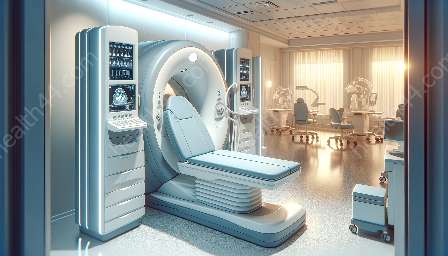Pulse oximeters serve as indispensable tools in the realm of diagnostic equipment, enabling healthcare practitioners to monitor a patient's oxygen saturation noninvasively. Operating on the principle of spectrophotometry, pulse oximeters provide valuable insights into respiratory status and play a critical role in medical devices and equipment. This comprehensive guide delves into the functions, applications, and importance of pulse oximeters, shedding light on their relevance in the healthcare landscape.
Understanding Pulse Oximeters
At its core, a pulse oximeter is a non-invasive medical device that measures a person's oxygen saturation (SpO2) level, providing crucial information about the amount of oxygen in their blood. These devices also monitor the heart rate, making them an invaluable asset in diagnosing and managing various respiratory conditions. By emitting and detecting specific wavelengths of light through a pulsating capillary bed, pulse oximeters calculate oxygen saturation levels with impressive accuracy.
Applications in Diagnostic Equipment
Pulse oximeters have become an integral component of diagnostic equipment, offering healthcare professionals a quick and convenient means of assessing a patient's respiratory function. Whether in the emergency room, intensive care unit, or during routine medical examinations, the ability to accurately and continuously monitor a patient's oxygen saturation and heart rate is critical for timely intervention and treatment decisions.
Moreover, these devices are increasingly being utilized in home healthcare settings, empowering individuals to monitor their oxygen levels in the comfort of their own homes. This accessibility can be life-changing for individuals with chronic respiratory conditions, providing valuable insights into their health status and potentially reducing the need for frequent hospital visits.
Incorporation into Medical Devices
With the advancement of technology, pulse oximeters are now integrated into various medical devices, further enhancing their utility and scope. From handheld portable oximeters to multiparameter patient monitors, these devices seamlessly integrate with other medical equipment, enabling comprehensive patient assessment and streamlined workflow in clinical settings. The ability to continuously monitor oxygen saturation and heart rate through interconnected medical devices facilitates efficient patient care and contributes to better health outcomes.
The Significance of Pulse Oximetry
Pulse oximetry has revolutionized respiratory care and monitoring, offering a non-invasive method to assess a patient's oxygenation status. Its significance extends beyond diagnostic and medical equipment, permeating various healthcare scenarios, including:
- Perioperative Monitoring: Pulse oximeters play a critical role in perioperative care, ensuring patients' oxygen levels are maintained within optimal ranges during surgical procedures.
- Home Respiratory Care: Patients with chronic respiratory conditions benefit from at-home pulse oximetry monitoring, enabling early intervention and personalized management.
- Emergency Medical Services: First responders and paramedics utilize pulse oximeters to assess and monitor individuals in emergency situations, guiding triage and treatment decisions.
- Remote Patient Monitoring: In telemedicine and remote patient monitoring programs, pulse oximeters enable healthcare providers to remotely assess and manage patients with respiratory conditions, improving access to care.
Benefits and Innovations
The utilization of pulse oximeters offers several advantages, including:
- Early Detection: Identifying oxygen desaturation at an early stage allows for prompt intervention, potentially preventing respiratory complications.
- Real-time Monitoring: Continuous monitoring of oxygen saturation facilitates timely adjustments in treatment plans and interventions, improving patient outcomes.
- Portability and Accessibility: The compact and portable nature of modern pulse oximeters enhances their accessibility, enabling monitoring in diverse healthcare settings, including remote and resource-limited environments.
- Technological Advancements: Ongoing innovations have led to the development of wireless and wearable pulse oximeters, further expanding their potential applications and usability.
Conclusion
Pulse oximeters have firmly established themselves as indispensable tools in the realm of diagnostic equipment and medical devices, playing a pivotal role in assessing and managing respiratory status. Their continuous advancements and integration into various healthcare settings underscore their importance in improving patient care and outcomes. As technology continues to evolve, pulse oximeters are poised to further transform the landscape of respiratory care, offering enhanced functionality and accessibility for both healthcare professionals and patients.


